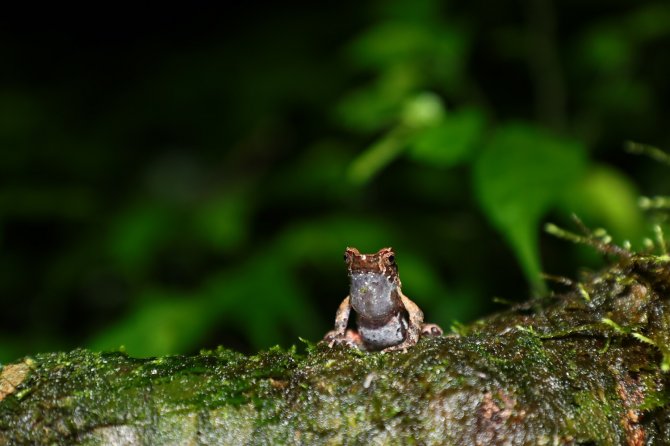News
Cognition versus camouflage: predator-driven evolution
A frog with a large brain can probably better assess the risk of an approaching snake and save itself at the most favorable moment with a courageous jump. “Those who are less ‘brainy’ need good camouflage. Those who are smart can afford to stand out more," concludes biologist Alexander Kotrschal of Wageningen University & Research, based on research in 102 frog species.
The study on the relationship between cognition (brain capacity) and camouflage was published August 17th, 2022 in the scientific journal Science Advances.
Brain development
Crypsis – hiding yourself from your surroundings − is a prominent antipredator adaptation. The role of the brain in predator-driven evolution is controversial in science. To change this, antipredator traits were examined in 102 Chinese frog species. “We hypothesize that the reduced predation risk due to crypsis reduces selection on the brain. We tested that hypothesis in the frogs.”

Predation pressure
The frogs' phylogenetic analysis revealed an indirect relationship between predation risk and crypsis, mediated by brain size. This result suggests that frogs can afford to stand out at low predation risk and use their larger brains for cognitive evasion from predators. “With higher predation pressure, this strategy can become less efficient or become to energetically expensive. In that case, smaller brains and increasing crypsis are more favorable for the animal to survive,” states Kotrschal.